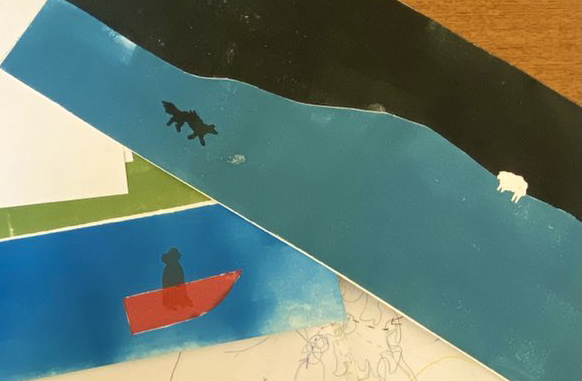Teaching Philosophy with Non-Linguistic Media
We have students read books and articles, write essays, answer test questions, and make presentations. These all mainly involve words. Is it worth thinking about how to teach philosophy in ways that don’t involve words?

[image via Handling Ideas]
Martin Lenz (Groningen) thinks so. In a post at his blog, Handling Ideas, he says,
the mere attempt to transform written thoughts into images or to combine these two media can afford a more holistic understanding of various issues… Every now and then I have been trying to encourage students to make use of drawings, tables, graphs or other sorts of tools in their writing. We are obviously inclined to employ different styles of reasoning in keeping with our diverging talents or backgrounds. As Frege argued in his Begriffsschrift, we clearly see different aspects of thoughts when using different graphic representations of logical inferences.
Here’s a teaching experiment he tried in his course, Medieval Theories of Thinking:
I wrote to my students a day before class asking them to bring coloured pencils, then handed out sheets of drawing paper and requested them to prepare infographics on the spot. I divided the students in three groups. One had to depict a conceptual distinction or problem, another had to depict a debate, and yet another had to depict a historical development. After chosing a topic, they had about thirty minutes to produce their work and then present (a) on the topic depicted and (b) on the experience afforded through the task. The outcomes were amazing.
Some benefits of exercises like this, he notes, include:
- giving a set of students, besides the highly verbal, an opportunity to shine in class
- forcing the students to show an understanding of the material without being able to parrot back what they’ve read or what the instructor has said
- providing new ways for students to connect with or anchor the ideas they’re learning about.
You can read more from Professor Lenz on this here.
I’m curious if others have attempted teaching philosophy through images and other primarily non-linguistic media and assignments, what students have thought of them, how effective you thought they were, concerns you have about them, and so on. Discussion welcome.
The post Teaching Philosophy with Non-Linguistic Media first appeared on Daily Nous.